Best Air Purifying Plants To Put In Your Home Today
What are the best air purifying plants out there? This is great to know for what to add around your home or office.
This article is more than 2 years old
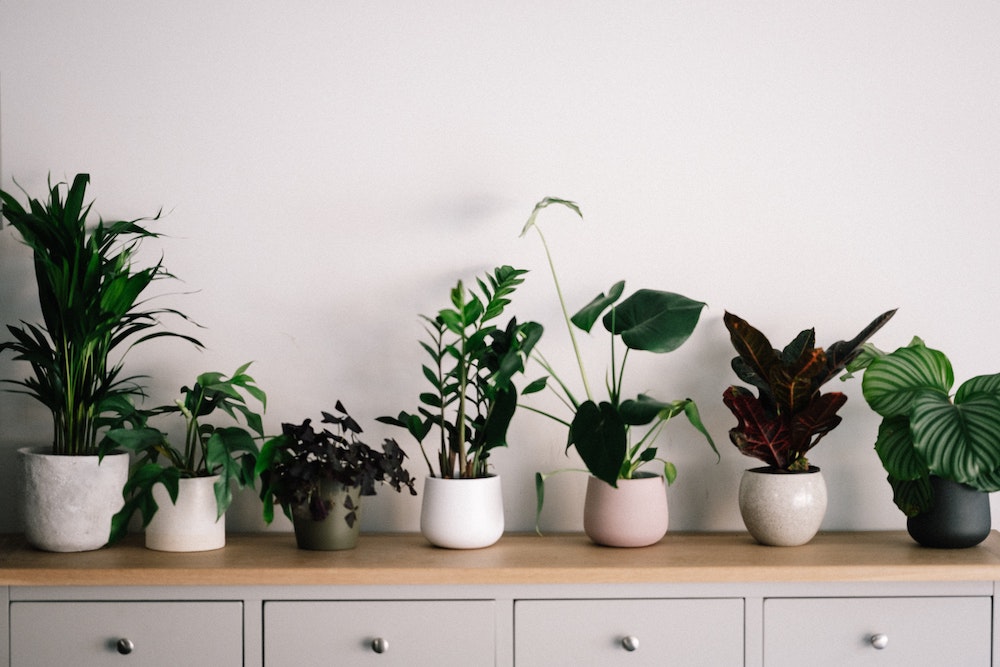
Whether you live in a big city or small, undoubtedly one of your main concerns is (or should be) the air you breathe. If you were to think about air pollution, your first thoughts would probably go to the car exhaust or exhaust from burning coal and you would be right. But did you know, according to NASA’s Clean Air Study, the air you breathe “indoors is as much as much as 30 times more toxic than the air outside?” This is where the best air purifying plants come in handy. Let us explain.
Now, you’re probably thinking to yourself, NASA? Clean air? Aren’t they the organization that sends rocket ships into outer space? Rockets that use rocket fuel to propel them into the stratosphere. Rockets that send billowing clouds of smoke into the air we breathe. Yes, that NASA.
There was a reason that NASA and the Associated Landscape Contractors of America (ALCA) teamed up to research the best ways to clean the air in sealed environments like a space station. In our case, though, your “sealed environment” is your home, so this Clean Air Study can easily pertain to you as well and not just astronauts.
DO PLANTS ACT AS AIR PURIFIERS?
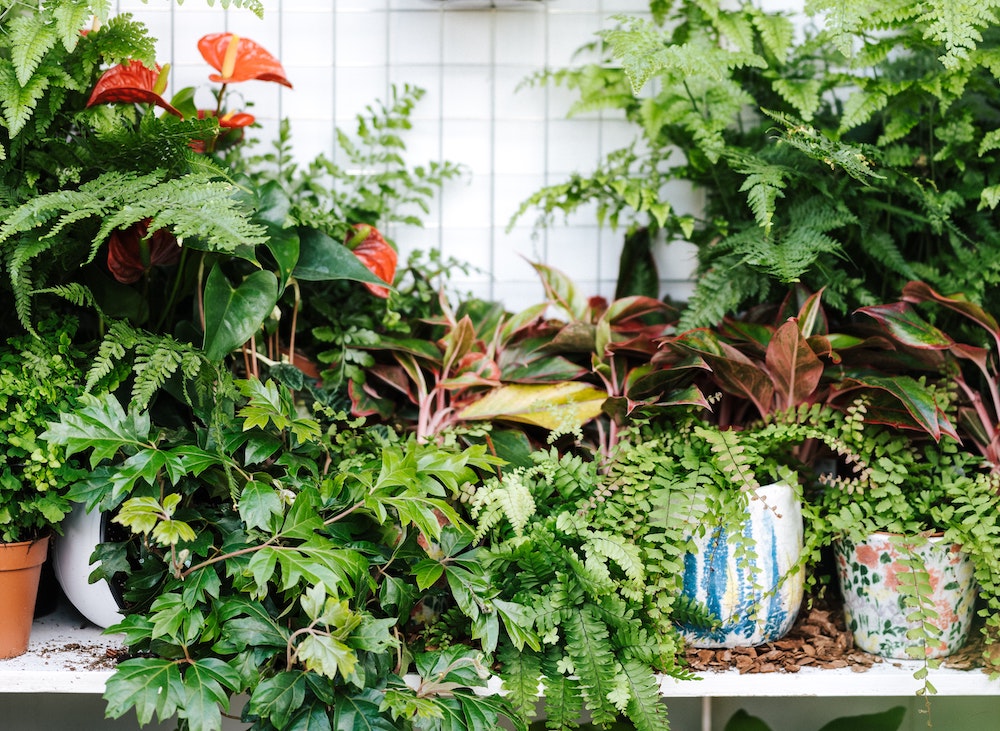
What the NASA Clean Air Study showed was that there are certain plants (quite a few as it turns out) that absorb the nasty indoor air which helps purify the air you breathe. The best air purifying plants not only absorb carbon dioxide and release oxygen through photosynthesis, but some of these air-purifying plants also provide a natural way of taking out other pollutants such as benzene (dyes, detergents, tobacco smoke, glue, paint), formaldehyde (paper bags, wax paper, paper towels, table napkins), trichloroethylene (printer ink, paints, varnish, adhesives), ammonia (window cleaner, floor wax, smelling salts, fertilizer), and xylene (rubber, leather, tobacco smoke). As you can see, most, if not all, of these pollutants are found inside your home.
HOW MANY PLANTS DO YOU NEED IN A ROOM TO CLEAN THE AIR?
NASA and ALCA conducted their Clean Air Study way back in 1989, so you’d expect since that time, more research has been done on the best air purifying plants. You would be right. The Journal of Exposure Science and Environmental Epidemiology (JESEE) conducted a new study in 2019 to see if what NASA and ALCA reported on still help true. While the end result proved that plants do act as air purifiers, they claim that to get a complete scrub of your indoor air, you would need 93 plants per square foot just to compete with an office ventilation system. The key word here, though, is “office.”
For your home, NASA has its own recommendations. They say that two or three plants every 100 square feet will make a difference. They also say that to get the most benefit from the best air purifying plants, make sure you use a variety of plants.
So, plants do work as a wonderful source of air-purifying, and with the massive uptick in in-home gardening, they are a perfect solution to your indoor worries. Yes, it may take quite a few indoor plants to make a noticeable difference, but what’s the concern there? Plants make for a nice environment, they can add color to an otherwise dull room, and not only do they absorb harmful indoor pollutants, but they also smell good too.
ARE PLANTS BETTER THAN AIR PURIFIERS?
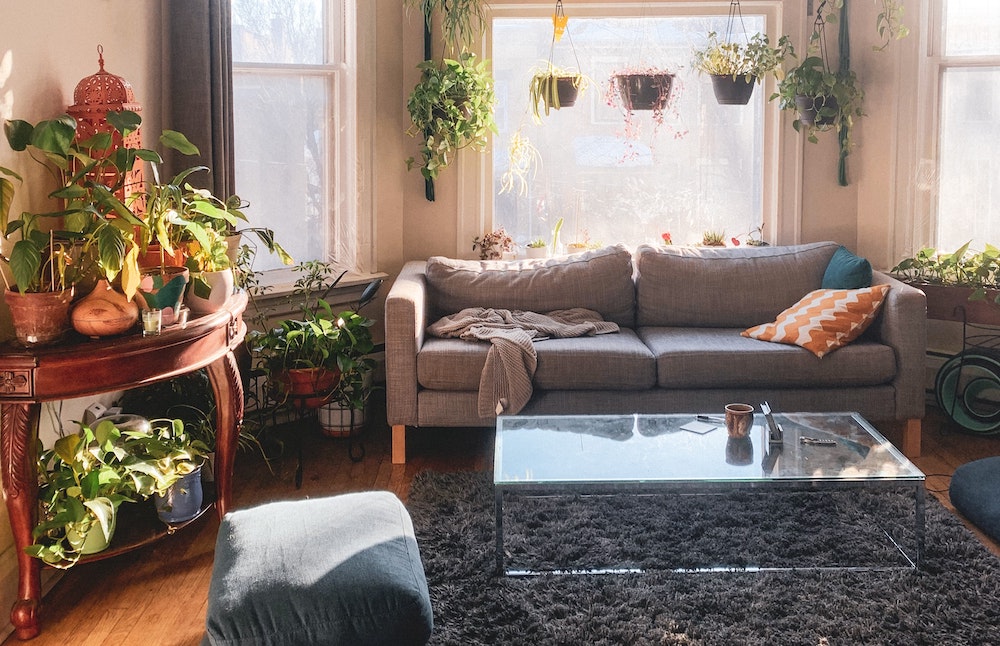
Plants provide the most natural and cost-effective option when it comes to purifying the indoor air you breathe. But as we’ve mentioned, it may take quite a few of them to make a difference. Air purifiers definitely give you another option when it comes to cleaning your indoor air, though it can be a more expensive option. On average, depending on the size of your home, if you are looking for a whole home air purifying system or just setting up individual units room-to-room, you will find yourself paying anywhere from $50 to $1,000. Of course, you can always double the air-purifying in your home by using a combination of both.
A WORD TO THE WISE – PET OWNERS BEWARE
Without a doubt, there are tons of pet owners out there. Some of you are cat people, some of you prefer dogs, and there are some of you who have both in big numbers. Pet owners know that cats are curious creatures and dogs just like to make a mess and get into things. Some of the best air purifying plants have toxicity that might be very harmful to your animals.
The best air-purifying plants we are going to recommend may include some that could be harmful to animals. We will absolutely let you know which ones do. But our list is only a fraction of the plants you can use to help purify your indoor air. We strongly recommend that if you have pets and are looking to add plants to your home for this purpose, please do your due diligence.
THE BEST AIR PURIFYING PLANTS
We have put together a short list of 10 of the best air purifying plants. As we mentioned, we will note if a plant is harmful to your pets. We’ll also give you an idea of the dent in your wallet these plants will make. So, in no particular order, let’s get started with the best air purifying plants.
SNAKE PLANT AKA MOTHER-IN-LAW’S TONGUE
PRICE – $24.99 on Amazon.
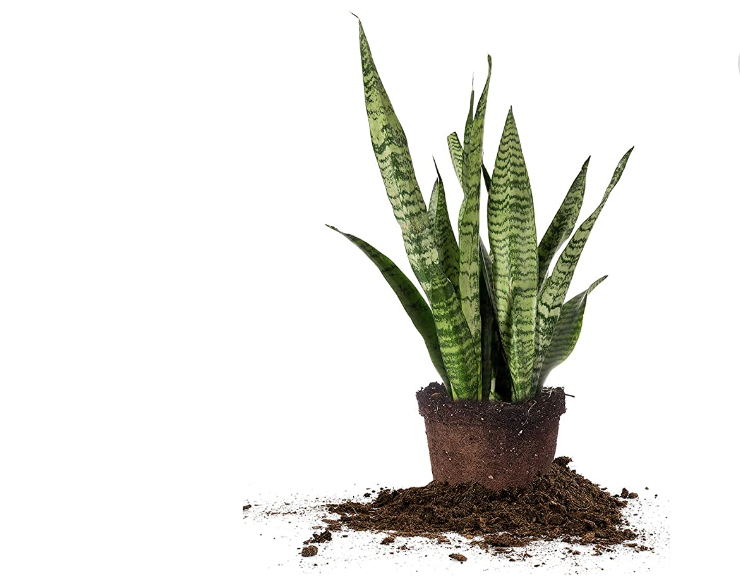
The Snake Plant, also known as Mother-in-Law’s Tongue, is a great plant to have in your bedroom if you are looking for a good night’s sleep. This yellow-tipped beauty is known for its nighttime oxygen production to allow you for better breathing at night. One of the best air purifying plants, it removes benzene, formaldehyde, trichloroethylene, xylene, and toluene.
HOW TO CARE – The Snake Plant works best with window light. It needs to be watered weekly but be careful not to overwater it as the roots rot in moist soil.
MONEY PLANT
PRICE – $24.08 on Amazon.
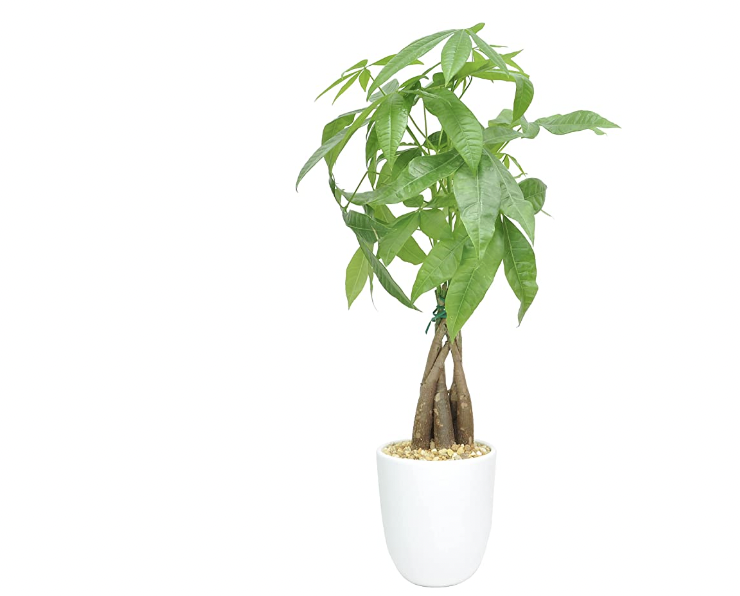
WARNING – THIS PLANT IS TOXIC TO PETS AND SMALL CHILDREN IF LEAVES ARE INGESTED
This is one plant that NASA featured as it has a wonderful ability to remove chemicals and pollutants such as benzene, formaldehyde, xylene, and toluene from your indoor air. Although it does have a high purification rate, it is one you need to be careful with if you have pets or small children. Be sure to keep it up and out of the way.
HOW TO CARE – This plant prefers indirect light. You will only have to water it every week or so. It works best in any room as long as it is out of reach from the small ones and pets.
CHINESE EVERGREENS
PRICE – $22.18 on Amazon.
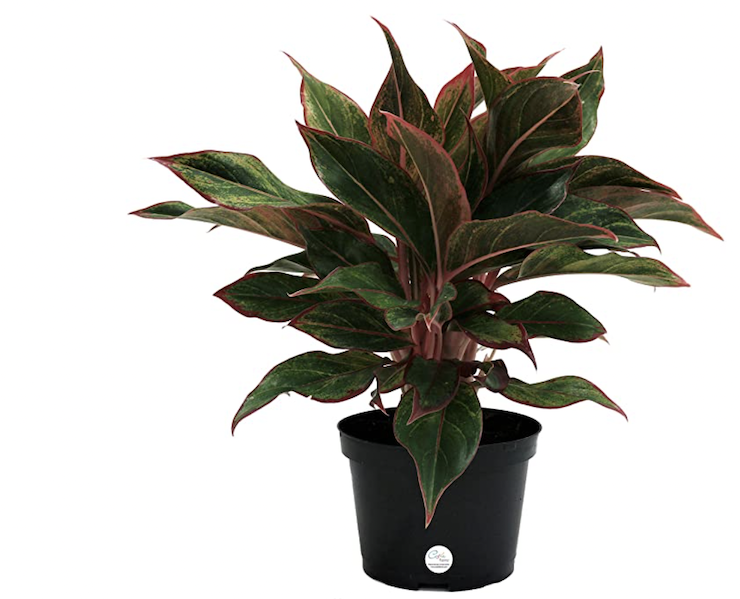
This air-purifying plant is one of the more common indoor plants on the market. It releases a high oxygen content and removes harmful chemicals such as benzene, formaldehyde, and other toxins.
HOW TO CARE – The best placement for the Chinese Evergreen is the living room but it does love conditions so a plant in the bathroom could also work. It works well in full shade. Care is minimal as you will only need to water the plant on occasion, just making sure the soil remains moist.
ALOE VERA
PRICE – $24.99 on Amazon.
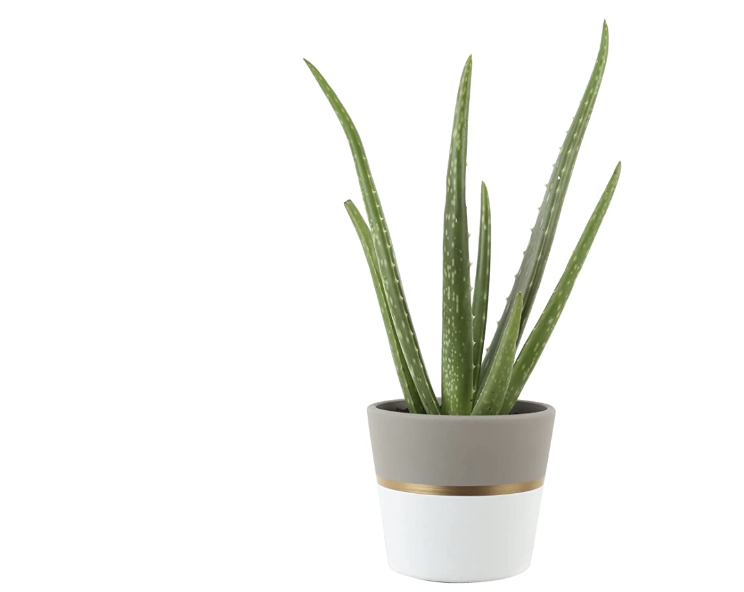
We all know the healing powers that Aloe Vera has when rubbed on the skin, but did you also know it was one of the best air-purifying plants as well? Aloe Vera purifies the air by removing the formaldehyde and benzene found in your detergents and varnishes.
HOW TO CARE – These plants thrive in sunny locations, so wherever you have sun, Aloe Vera will go.
BROAD LADY PALM
PRICE – $26.95 on Amazon.
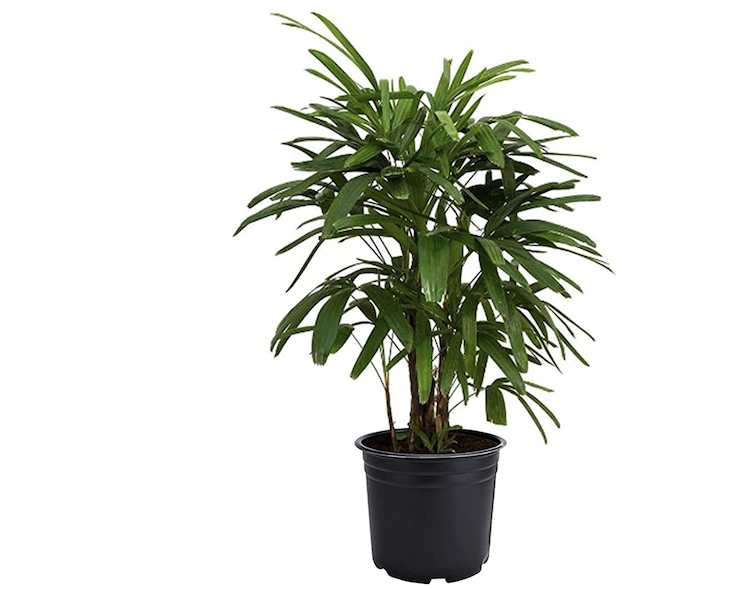
The Broad Lady Palm is one of the best air-purifying plants as it is well known as one of the few plants that can help reduce the ammonia levels that are found in a large range of cleaning products. You should know, though, that if you purchase them fully grown, they can be quite expensive. So, your best bet is to find a small one or even start your plant from seed.
HOW TO CARE – The Broad Lady Palm loves humid conditions, so it works well in the bathroom. However, it can thrive in other places around your home such as the living room or even your entryway. If you place it in your bathroom, be careful not to overwater since it takes the water from the bathroom’s humidity.
DRAGON TREE
PRICE – $24.44 on Amazon.
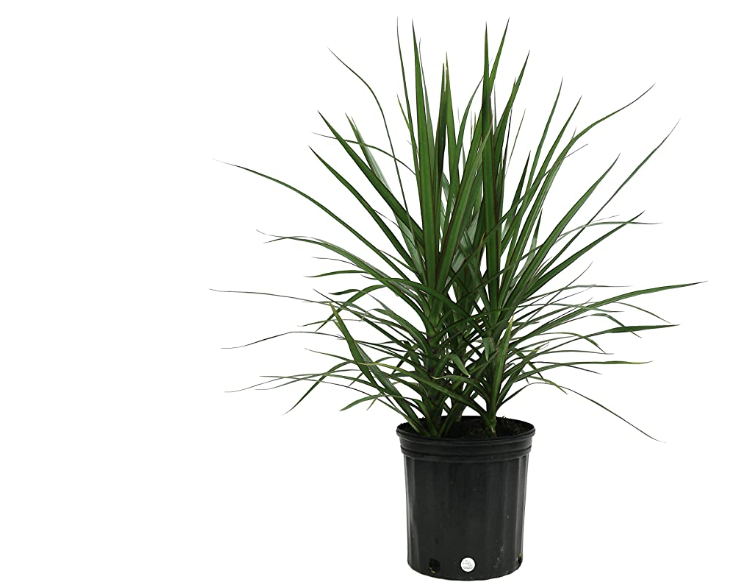
If you wish to add a splash of color while purifying your indoor air, the Dragon Tree will do the trick. The leaves are bright red trimmed and they remove the trichloroethylene and xylene pollutants from the air.
HOW TO CARE – Give this plant a reasonable amount of sun and it will be happy. Be aware, though, the plant can grow up to 8 feet tall so make sure wherever you place it, it will have plenty of ceiling space to reach its eventual height.
WEEPING FIG
PRICE – $16.99 on Amazon.
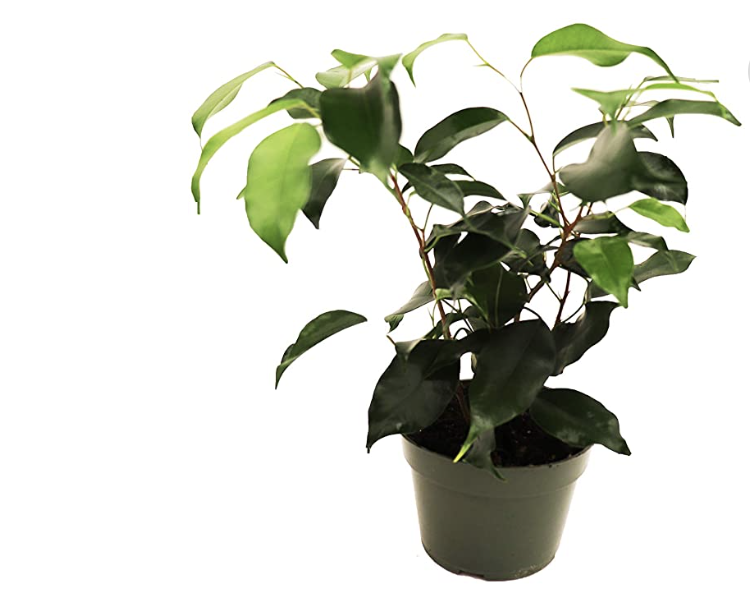
Although it possesses a very sad-sounding name, the Weeping Fig has been a popular houseplant for centuries. As an air purifier they are great for removing formaldehyde, xylene, and toluene.
HOW TO CARE – Weeping figs can be fussy as far as plants go. They don’t care much for change, so keep your plant in a well-lit space, but with indirect light, and don’t bother them with drafts.
RUBBER PLANT
PRICE – $28.73 on Amazon.
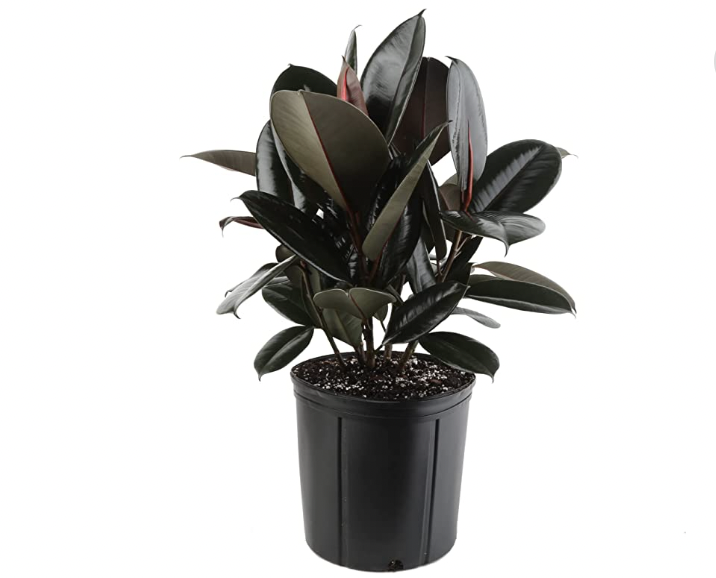
WARNING – THIS PLANT IS TOXIC TO PETS AND SMALL CHILDREN IF LEAVES ARE INGESTED
The Rubber Plant comes highly recommended by NASA as one of the best air-purifying plants we have. They have large leaves that absorb airborne chemicals, breaking them down, and making them harmless. They can also absorb carbon dioxide and then convert it to breathable oxygen. Rubber Plans also have the ability to remove mold spores and bacteria found in the air.
HOW TO CARE – The Rubber Plant is very adaptable. They can thrive in dim light and should be allowed to dry out between watering. They work better with underwatering than they do with overwatering. This is another plant that can reach heights of 8 feet, so make sure it has plenty of room to stretch. Again, this plant is toxic, so please be careful with your animals and your little ones.
DRACAENAS
PRICE – $23.23 on Amazon.
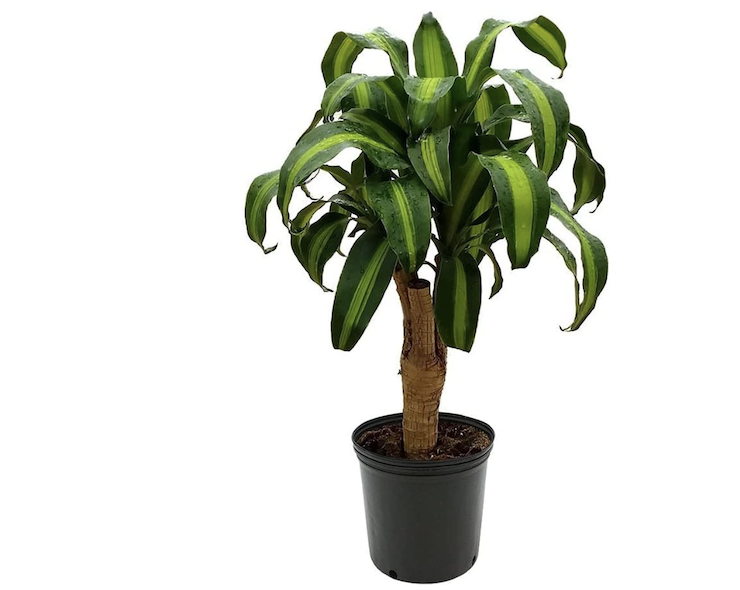
This popular plant has its origins in the African forests. It is also one of the most effective air-purifying plants. Not only does it help clean the air you breathe, but it is quite striking in appearance.
HOW TO CARE – The Dracaena doesn’t require too much fuss. Since it doesn’t need as much water as other plants, keeping it hydrated by misting its leaves will work for this plant. The soil should remain moist but not soggy or you will get root rot.
THE FLAMINGO LILY
PRICE – $34.22 on Amazon.
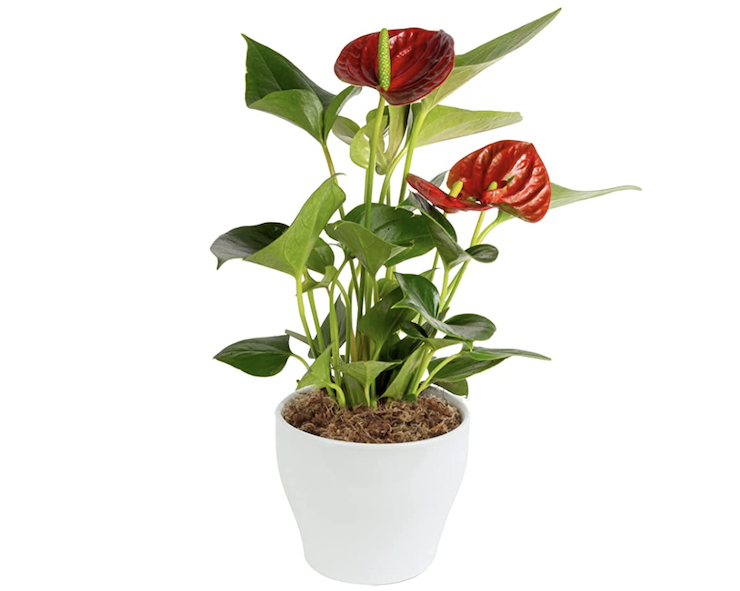
This is another one of the best air-purifying plants that will also add a ton of color to a room. The leaves are heart-shaped while boasting an eye-popping salmon-red color. They are excellent in helping clean your indoor air.
HOW TO CARE – You will want to keep your Flamingo Lily close to bright lights but away from direct sunlight. To make sure your plant succeeds, be sure to water it once or twice weekly. They work well in humid areas, so they could work best in your bathroom, though putting one in your kitchen could work as well.
FINALLY
These are only 10 of the best air-purifying plants on the market. There are others we’d like to give a special shout-out in case you can’t find some of the above. These are the Pineapple Plant, Kentia Palm, Devil’s Ivy, Chrysanthemum, Barberton Daisy, Lilyturf, Kimberly Queen Fern, Boston Fern, and the Dwarf Date Palm. All of these work well as additions to the best air-purifying plants for your home.



